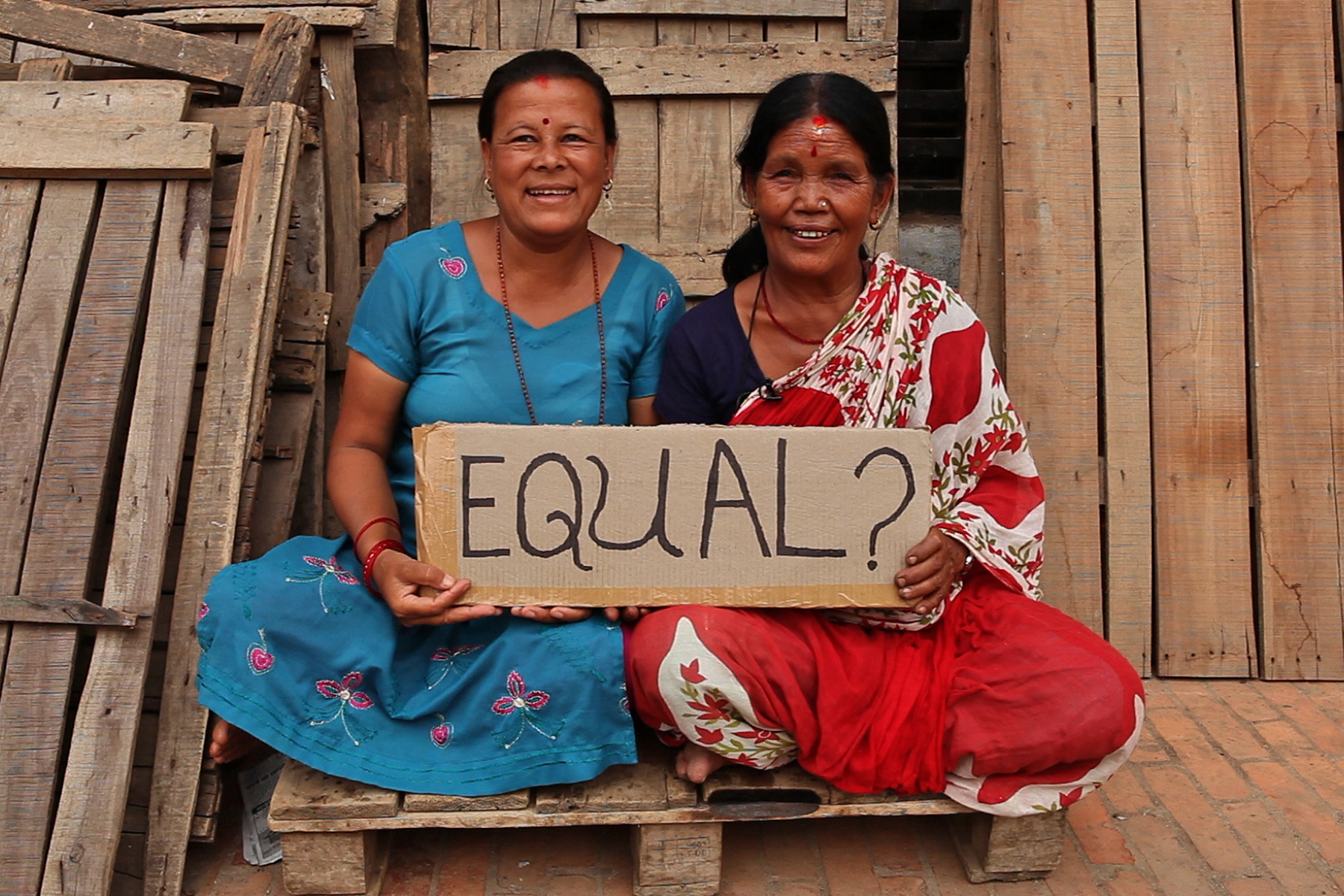This blog was cross-posted from Medium.
This week, more than 6,000 advocates, policy experts, and government officials from around the world are gathering in Vancouver, Canada, for the triennial Women Deliver Conference (WD2019). The event—the world’s largest conference on gender equality and the health, rights, and well-being of women and girls—will, for the first time in its history, include a focus on humanitarian response.

Equal? Women in Nepal. © Stephan Bachenheimer/World Bank SB-NP01 Licensed under CC 2.0.
The Women’s Refugee Commission (WRC) is encouraged to see the intersection of gender equality and humanitarian response featured at this year’s conference. For 30 years, we have been working in partnership with many of the organizations represented at WD2019 to advance the rights and protections for displaced women and girls in crisis and conflict settings.
From our experience, we know that promoting gender equality in humanitarian action not only improves outcomes for women and girls but also strengthens the effectiveness and impact of the entire humanitarian response. A gender equality approach takes account of power relations and the ways multiple forms of discrimination impact the needs of different groups. It ensures equal access to protection and services and opens up opportunities for all. We know from our research that when humanitarian assistance adequately addresses the intersectional needs and priorities of people in vulnerable situations, including women and girls and persons with disabilities, it can have a lasting transformative effect on individuals and communities alike.
Despite progress, much needs to be done
While the humanitarian community has made undeniable progress in recent decades in creating policies, guidelines, and tools to protect and empower refugee women and girls, much remains to be done.
Our collective failure to fully integrate gender analysis into humanitarian response programs—and allocate the necessary financial resources for this work—perpetuates the high risk of violence, inhibits our ability to reach those most in need of aid, and squanders the enormous potential that women and girls can bring to achieving solutions in humanitarian crises.
Strengthening a gender-responsive approach across the system is vital to improving the effectiveness of humanitarian response and reducing longer-term need for assistance. With the growing interest on the part of a growing number of governments and humanitarian agencies in prioritizing gender equality, there are now huge opportunities for us to move this agenda forward. And that’s why this week’s conference—and the conversations around humanitarian assistance—are so critical.
Gender equality, resilience, and inclusion in humanitarian response
At WRC, we are working with partner organizations, local civil society, and donor governments to move humanitarian response from the traditional needs-based model to one that is strengths based and advances gender equality, resilience, and inclusion.
It begins with accountability to displaced women and girls. We must more fully promote their leadership, participation, and decision-making. We must work toward a more effective and sustainable humanitarian response—one that capitalizes on women’s skills and capacities, and creates opportunities and a path to self-reliance. And, importantly, one that restores their dignity and hope.
We have identified many ways this can be done.
For example, when cash assistance is done right, it is a game changer for women. Giving women cash rather than in-kind handouts such as blankets and food increases their agency and can enhance their access to employment. When done with a focus on gender equality, it can also mitigate the risks of gender-based violence that sometimes accompany economic empowerment for women.
When sexual and reproductive health services are available from the beginning of every emergency—and when those services are inclusive of everyone, including adolescent girls and refugees with disabilities—not only are lives saved, but the quality of those lives improves markedly.
When the most marginalized adolescent girls have access to safe spaces, they are able to network with their peers, build skills, and prepare for entry back into formal education.
And, when we build genuine partnerships with local women’s organizations, which play such a vital role in crisis response, we can better leverage their skills and inherent gender expertise to the benefit of both the displaced and host community.
We must make sure that women and girls have the resources they need to be safe, healthy and self-reliant. We must ensure that they can fully and meaningfully participate and avail themselves of opportunities. With the right support, refugee women and girls can not only survive, they can be agents of change within their communities.

